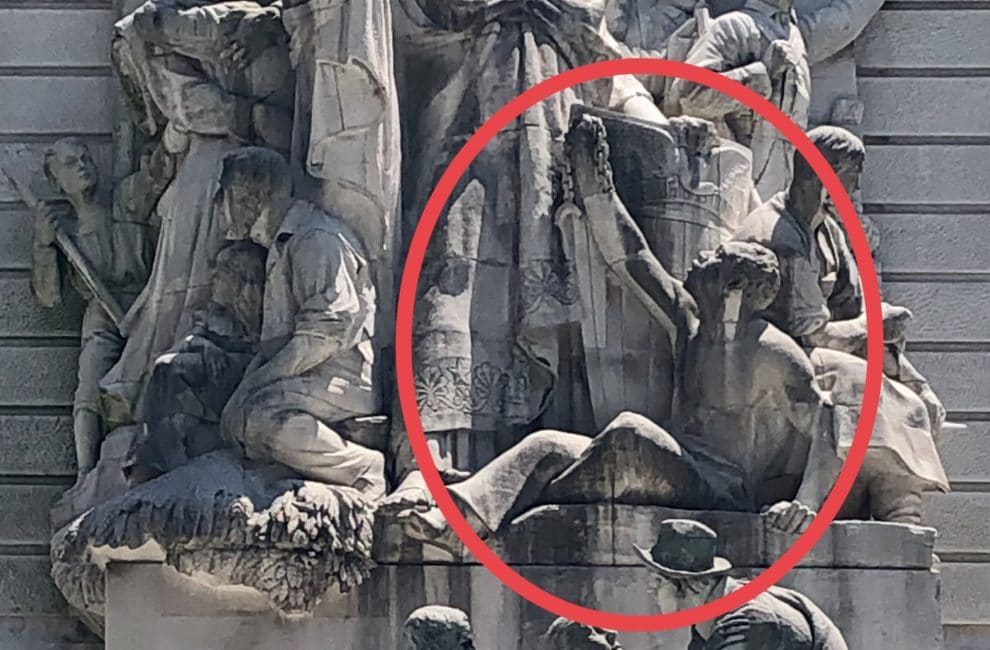The Monument’s Freed Slave: A Brief History

An image of a "freed slave" wasn't in the original design of a group of sculptures on the west-facing side of The Soldiers and Sailors Monument known as “Peace.” Photo by Michael Rubino
Attempts to find an appropriate public home for Fred Wilson’s proposed “E Pluribus Unum” sculpture—modeled after the figure of a freed slave on the Soldiers and Sailors Monument–have caused quite a brouhaha. “The problem,” wrote Amos Brown III* of the Indianapolis Recorder, “is 108 years after the only African-American statue image (of a slave) was placed downtown, our African-American community believes it’ll be another 108 years before more Black public art will be financed here.”
What about that “image”?
It appears in a group of sculptures on the west-facing side of the monument known as “Peace.” In the center, a robed Liberty holds a shield inscribed with the Latin “E Pluribus Unum.” A man sits at her feet, shirtless, gazing at her as he holds out a set of broken shackles.
Circle Citizen looked through official documents from before and after the monument’s construction in 1902—all housed at the Indiana Historical Society. An early model, designed by Bruno Schmitz, included a sketch of the “Peace” group; a photograph of the model from 1889 clearly shows Liberty, but appears not to include the freed slave. Later, sculptor Herman Matzen created the detailed design of the “Peace” group that we recognize today, which was finally carved in stone by another sculptor, Rudolf Schwarz.
Interestingly, Circle Citizen found virtually no reference to the freed-slave figure, or to slavery in general, among those early monument documents. Officials involved in planning the Civil War memorial seem to have regarded the end of slavery as little more than a fortunate byproduct of the great national conflict. “Without variation or shadow of turning,” said one speaker at the monument’s dedication, “[Lincoln] held the helm to the one idea, that no matter what might happen to the dark institution of slavery, yes, regardless of all other questions, the controlling determination was, the Union should be preserved.”
Nevertheless, the image of the freed slave was remarkable for its time, when most Civil War memorials focused on soldiers and neglected the issue of slavery altogether, according to local architectural historian William Selm. “How many Civil War monuments can you think of that make reference to the direct cause of the war?” he says. “People sort of forgot about that major issue. Including that image was an act of honesty.”
But the portrayal did have at least one early critic. “I feel an impulse to seize [him] by his dangling foot and slide him gently off into oblivion,” wrote black art historian Freeman Henry Morris Murray, in 1916, “or else say to him, as sternly as I can: ‘Awake, awake, put on thy strength …shake thyself from the dust; arise.’ You deserve a place at Liberty’s side, not at her feet.”
*Brown passed away in 2015.





